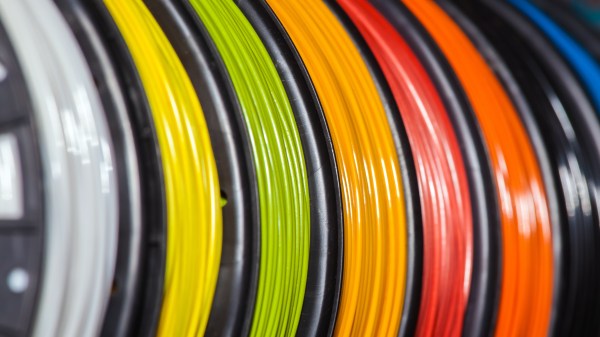We’ve all heard stories of the dangers of 3D printing, with fires from runaway hot ends or dodgy heated build plates being the main hazards. But what about the particulates? Can they actually cause health problems in the long run? Maybe, if new research into the carcinogenicity of common 3D printing plastics pans out.
According to authors [CheolHong Lim] and [DongSeok Seo], the research covered in this paper was undertaken because of reports of rare cancers among Korean STEM teachers, particularly those who used 3D printers in their curricula. It was thought that only long-term, continued exposure to the particulates generated by 3D printers could potentially be hazardous and that PLA was less likely to be hazardous than ABS. The study was designed to assess the potential carcinogenicity of both ABS and PLA particulates under conditions similar to what could be expected in an educational setting.
To do this, they generated particulates by heating ABS and PLA to extruder temperatures, collected and characterized them electrostatically, and dissolved them in the solvent DMSO. They used a cell line known as Balb/c, derived from fibroblasts of an albino laboratory mouse, to assess the cytotoxic concentration of each plastic, then conducted a comet assay, which uses cell shape as a proxy for DNA damage; damaged cells often take on a characteristically tailed shape that resembles a comet. This showed no significant DNA damage for either plastic.
But just because a substance doesn’t cause DNA damage doesn’t mean it can’t mess with the cell’s working in other ways. To assess this, they performed a series of cell transformation assays, which look for morphological changes as a result of treatment with a potential carcinogen. Neither ABS nor PLA were found to be carcinogenic in this assay. They also looked at the RNA of the treated cells, to assess the expression of genes related to carcinogenic pathways. They found that of 147 cancer-related genes, 113 were either turned up or turned down relative to controls. Finally, they looked at glucose metabolism as a proxy for the metabolic changes a malignant cell generally experiences, finding that both plastics increased metabolism in vitro.
Does this mean that 3D printing causes cancer? No, not by a long shot. But, it’s clear that under lab conditions, exposure to either PLA or ABS particulates seems to be related to some of the cell changes associated with carcinogenesis. What exactly this means in the real world remains to be seen, but the work described here at least sets the stage for further examination.
What does this all mean to the home gamer? For now, maybe you should at least crack a window while you’re printing.












